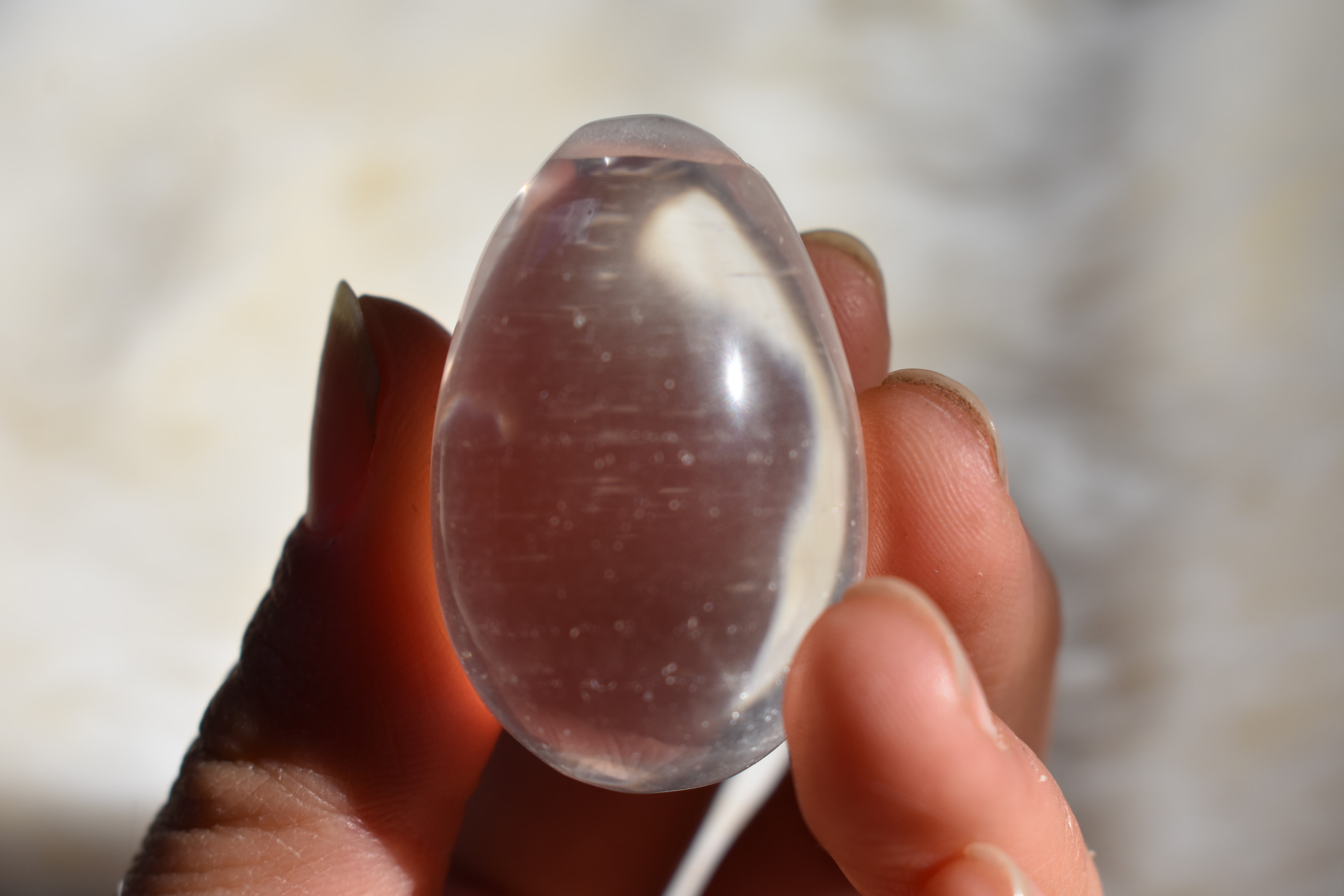
Table of Contents ▾
A pelvic muscle spasm is an involuntary tightening of the muscles in the pelvic floor that can lead to ongoing pain. These muscles, located at the base of the pelvis, support the bladder, uterus, and rectum, and help control urination, bowel movements, and sexual function. When a spasm occurs, the muscles contract without your control, which can cause pain, pressure, or a sense of tightness.
Pelvic muscle spasms differ from general pelvic cramps. Cramps often feel like a slow-building ache or dull pain, while spasms are sudden and can feel sharp or burning. Spasms can happen at any time, sometimes triggered by stress, fatigue, or certain activities, but they can also occur without a clear reason.
The Pelvic Floor Muscles and Pelvic Spasms
The pelvic floor is a group of muscles stretching from the pubic bone at the front to the tailbone at the back. These muscles support pelvic organs and help maintain continence. When functioning normally, they contract and relax in a coordinated way, allowing for comfortable urination, bowel movements, and sexual function.
When the pelvic floor is in spasm, the muscles stay contracted instead of relaxing. This can disrupt bladder and bowel function and cause pain. You might hear terms like pelvic floor dysfunction, pelvic floor disorder, or hypertonic pelvic floor. These all describe when the pelvic floor muscles are not working properly.
It’s also important to note that pelvic muscle spasms are often linked to nervous system dysregulation. The internal pelvic floor muscles, especially the internal anal and vaginal sphincters, are smooth muscles, meaning they’re controlled not by conscious effort but by your autonomic nervous system. If your body is in a constant state of threat response (fight, flight, or freeze), these muscles tend to stay tight, even when you’re mentally trying to relax.
Symptoms Most Women Overlook or Dismiss

Pelvic muscle spasms often present with a variety of symptoms that can easily be overlooked or dismissed as normal. Here are some of the most common signs to watch for:
-
Pelvic Pain
Pain can be sharp, burning, or a constant dull ache in the lower abdomen, vagina, or perineum. It often feels worse with movement, sitting, or standing for long periods.
-
Bladder Issues
You may experience urinary urgency, frequency, or a feeling that you can’t fully empty your bladder. There can also be burning or discomfort during urination even when no infection is present.
-
Painful Sex
Intercourse may cause burning, stinging, or deep pain that lingers afterward. Some women feel like their muscles are too tight to allow penetration comfortably.
-
Bowel Problems
Constipation, difficulty emptying, or a feeling of incomplete evacuation are common. You might also feel pressure or discomfort during bowel movements.
-
Pressure or Heaviness
A sensation of pressure or heaviness in the pelvic area, especially after standing or physical activity, can indicate muscle tightness. This can also be accompanied by a feeling of “bearing down” or fullness.
Common Causes of Pelvic Floor Muscle Spasms
Pelvic muscle spasms often build up over time and can be caused by a variety of factors. Here are some of the most common contributors:
-
Chronic Muscle Tension
Habitual clenching of the pelvic floor muscles is often caused by emotional or physical trauma, stress, poor posture, or long hours of sitting, leading to ongoing tightness and discomfort. Over time, this tension can become a holding pattern that is hard to break.
-
Pelvic Trauma
Injuries or trauma to the pelvic area, including childbirth, surgeries, or accidents, can lead to muscle guarding and spasms.
-
Medical Conditions
Underlying conditions such as endometriosis, irritable bowel syndrome (IBS), or interstitial cystitis can contribute to pelvic muscle spasms. These conditions can cause inflammation or irritation in the pelvic region.
-
Emotional Stress
Ongoing stress and anxiety can affect the nervous system, keeping the pelvic floor muscles in a state of heightened tension. This constant state of alert can make it difficult for the muscles to relax naturally.
3 Steps to Building Your Path to Pelvic Floor Healing
Clinical Intervention
Pelvic Floor Physical Therapy (PFPT)
Pelvic floor physical therapy is a hands-on treatment that focuses on assessing and releasing tension in the pelvic floor muscles. It is performed by a trained pelvic floor therapist.
The therapist starts by talking to you about your symptoms and medical history. With your consent, they perform an internal exam using a gloved, lubricated finger to feel the muscles inside your vagina. They check for tightness, tenderness, and areas that may be contributing to your pain.
Once they identify areas of spasm or tension, the therapist uses gentle, sustained pressure to help the muscle release. They may also guide you through breathing techniques and posture adjustments to support muscle relaxation.
Trigger Point Release and Myofascial Therapy
Trigger Point Release and Myofascial Therapy are hands-on techniques used in pelvic floor therapy to target specific problem areas that can contribute to pelvic muscle spasms. They help reduce muscle pain and tension by releasing areas that have become tight or overactive.
Trigger points are those tight little knots in your muscles that can send pain to unexpected places such as your hips, lower back, or thighs. Your therapist finds these by feeling for areas that are especially tender or tight. They’ll press gently but firmly on the spot for about 30 to 90 seconds, encouraging it to release.
Biofeedback
Biofeedback is a simple tool with small sensors placed externally or internally that let you see on a screen whether you’re clenching or relaxing. It shows you how your pelvic floor is working in real time. You’ll be learning how to control your muscles while actually seeing the results. Research backs up biofeedback as a powerful way to improve muscle control and reduce pain.
Electrical Stimulation
A small, soft probe sends a mild current that activates the muscles, teaching them to contract and relax more naturally. When your muscles have forgotten how to relax, or have become too weak to respond, gentle electrical stimulation can help retrain them. Studies show this can help women who have pain and trouble with bladder control get back to normal activities with less pain.
Addressing Bladder or Bowel Dysfunction
Bladder and bowel dysfunction may be assessed during pelvic floor therapy because these functions are closely linked to pelvic muscle health. Overactive or tight pelvic floor muscles can contribute to symptoms like urinary urgency, frequent bathroom trips, constipation, and difficulty emptying the bowels.
At-Home Body-Based Support for Pelvic Floor Spasms
|
Practice |
How to Do It |
Why It Matters |
|
Diaphragmatic Breathing |
Lie on your back with knees bent. Place one hand on your belly, one on your chest. Breathe in so your belly rises, and exhale slowly, letting the belly drop. Repeat for 5-10 minutes daily. |
This breathing technique uses the diaphragm to reduce tension in the abdominal and pelvic floor muscles. It helps the pelvic floor move naturally with the breath, reducing overactivity and encouraging proper coordination of the muscles during everyday activities. |
|
Child's Pose |
Kneel, sit back on your heels, reach arms forward, and breathe into the belly. Hold for at least 1 minute, allowing the pelvic floor to soften. |
This gentle stretch helps lengthen and release tension in the lower back, hips, and pelvic floor. By relaxing the pelvic floor in this position, it can reduce protective muscle holding patterns that contribute to spasms. |
|
Happy Baby Pose |
Lie on your back, knees bent, feet flexed, pull knees toward armpits. Hold 30 seconds to 1 minute. |
This position targets the inner thighs and hips, areas connected to pelvic floor tension. Releasing these areas helps the pelvic floor relax by reducing indirect tension from surrounding muscles. |
|
Postural Correction |
Sit with feet flat, ribs stacked over pelvis, avoid tucking the tailbone. Practice throughout the day, especially at work or while driving. |
Good posture supports even pressure on the pelvic floor and reduces compensatory tightening from poor alignment. Keeping the spine neutral helps the pelvic floor work properly during movement and rest. |
|
Heat Therapy |
Place a warm (not hot) heating pad or water bottle on the lower belly or back for 10-15 minutes. |
Heat relaxes the pelvic floor muscles by increasing blood flow and calming the nervous system. This can reduce guarding and pain in the area. |
|
TENS Unit |
Place electrodes around the lower back or hips (per therapist's guidance) and use at a low, comfortable setting. |
TENS helps modulate pain signals and reduce muscle tension by stimulating the nerves that influence pelvic floor activity. |
|
Dilators or Crystal Wand |
Use a lubricated dilator or wand gently to explore tight spots internally. Go slowly and stop if it hurts. |
This tool helps release internal muscle knots and trigger points by applying sustained pressure. Regular use can desensitize the area and improve awareness of how the pelvic floor responds to tension. |
How Crystal Wands and Yoni Eggs Help The Pelvic Area
Crystal Wands

Crystal wands are precision instruments for mapping and retraining the pelvic floor. When used with awareness and proper technique, they can directly target hypertonic (overactive) muscles and help reset neuromuscular patterns that keep your pelvic floor stuck in contraction.
Targeted Pressure for Trigger Point Release
Pelvic muscle spasms are often caused by micro-contractures, small segments of muscle fibers that remain shortened and oxygen-deprived. These “trigger points” don’t always show up as sharp pain; sometimes they feel like pressure, burning, or even numbness. A crystal wand allows you to locate these areas internally and apply sustained, pinpointed pressure, similar to what a pelvic floor therapist might do with a finger during internal manual therapy.
The wand should be held still, not thrust or moved quickly. When you press into a spastic point, you may feel a slight discomfort at first, but after 30–90 seconds of pressure, the muscle tissue begins to “melt.” This is the neuromuscular release, where the muscle fibers elongate, blood flow is restored, and the nervous system begins to recalibrate its response to touch in that area.
Neuromuscular Reeducation
If an area has been painful or numb for a long time, your body may overreact to even gentle input. This is where crystal wands apply slow, consistent stimulation to help retrain the nerves around the spasm site. Over time, this reduces oversensitivity and helps the nervous system stop reacting to benign contact as if it were a threat.
By slowly pressing into an area, then backing off and re-approaching, you teach your body that not every touch equals danger. This increases your tolerance and reduces muscle guarding reflexes.
Yoni Eggs

Yoni eggs offer sustained, full-spectrum awareness and passive neuromuscular reset. They invite the muscles to respond differently through presence and proprioception.
Passive Engagement That Promotes Release
When inserted, a yoni egg provides a stable, gentle structure for the pelvic floor to respond to. It simply sits inside the vaginal canal, where your muscles naturally engage with it, bringing unconscious holding patterns to the surface. If your pelvic floor is habitually tight, the presence of the egg helps reveal this clenching without force.
Most women with chronic pelvic tension aren't even aware that they’re gripping. Yoni eggs help you feel the difference between clenching and relaxing. Over time, this builds your ability to recognize and release guarding reflexes that contribute to spasms.
Repatterning the Reflex to Grasp
One of the main issues with pelvic muscle spasms is that the body reacts to even mild internal presence (like a tampon, partner, or wand) with automatic contraction. This is often due to trauma, fear, or years of pressure-based habits. A yoni egg allows you to retrain this response.
This “training” doesn’t require squeezing or kegel exercises, in fact, overuse of kegels can make spasms worse. What’s needed is release with awareness, and that’s exactly what a yoni egg helps facilitate. Your vaginal muscles learn to relax around the egg, and your nervous system begins to associate internal contact with calm, rather than alarm.
Enhancing Sensory Feedback and Proprioception
Yoni eggs help increase proprioception, your ability to sense the internal shape, tone, and positioning of your pelvic floor. When inserted correctly (usually horizontally with the wider base near the opening), they create subtle shifts as you breathe or move. These shifts gently stimulate your fascia and muscle layers, improving your ability to detect and modulate tension.
Conclusion
Pelvic muscle spasms are a neuromuscular pattern, built from years of unconscious bracing, unprocessed trauma, postural collapse, inflammation, hypervigilance, and pelvic overuse.
This is why treatment must address both structure and signaling. Releasing the physical muscle tension is essential, but so is re-educating the nervous system that it’s safe to soften.
Given the right support, it can unlearn the chronic contraction.
FAQ
What causes pelvic muscle spasms?
Pelvic muscle spasms are caused by involuntary contractions of the pelvic floor muscles. These spasms can be triggered by physical trauma, pelvic surgery, pelvic inflammatory disease, or underlying conditions such as interstitial cystitis or painful bladder syndrome. Muscle tension from chronic stress, prolonged sitting, high intensity exercise, or emotional trauma can also lead to pelvic floor muscle spasms.
How do you relax pelvic muscle spasms?
Pelvic muscle spasms can be relaxed using pelvic floor physical therapy methods designed to treat pelvic muscle spasms, which include manual therapy, trigger point injections, and pelvic floor exercises to improve blood flow and muscle coordination. Heat therapy and diaphragmatic breathing can also help gently relax the pelvic muscles. Treatment strategies vary depending on the underlying cause, and a pelvic floor PT can recommend an appropriate plan.
Why does my pubic area feel like its fluttering?
A fluttering sensation in the pubic area is often due to pelvic floor muscle twitches, which are small, involuntary muscle contractions. These can result from muscle tension, weak pelvic floor muscles, or high levels of lactic acid from prolonged sitting or stress.
What is the red flag for pelvic pain?
Red flags for pelvic pain include sudden severe pain, signs of infection (such as fever, abnormal vaginal discharge, or urinary tract infection), blood in the urine, fecal incontinence, or pain that worsens over time. Pain that affects bladder function, bowel movements, or sexual function should also be evaluated by a healthcare provider.
